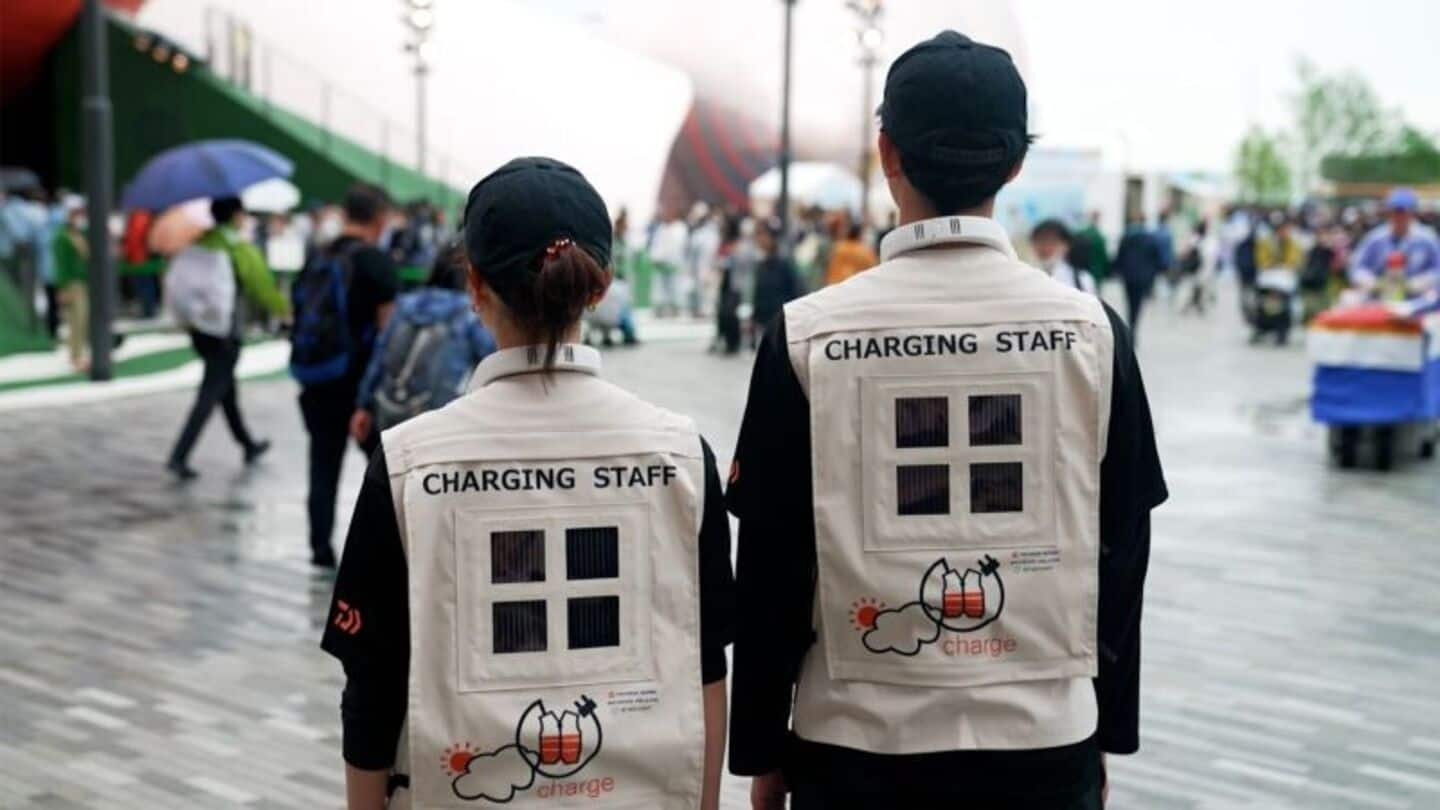
These lightweight solar-powered vests can cool you this summer
What's the story
As Osaka in Japan faces scorching summer temperatures nearing 38 degree Celsius, the staff at Expo 2025 are using solar-powered utility vests to beat the heat. The innovative garments were developed by Toyoda Gosei in partnership with Enecoat Technologies and Seiren. Each vest is equipped with ultra-thin and flexible solar panels that weigh less than 4g—lighter than a sheet of paper.
Technology
What's special about the solar panels?
Unlike traditional silicon panels used in solar farms and roofs, these solar "films" are made of perovskites. Perovskites are a class of crystals with the same structural characteristics. However, they are lighter and cheaper to produce than silicon panels, and can absorb a wider spectrum of light including visible and near-infrared. The vest's solar film has achieved an impressive 21.2% efficiency in lab tests, converting nearly one-fifth of solar energy into electricity.
Charging capabilities
Charging under shade, in cloudy weather
The solar panels on these vests can even charge "under shade, in rainy and cloudy weather," says Shinichiro Fuki, Director of the Toyoda Gosei team behind the vest. The project is a "world-first initiative" to integrate perovskite solar cells into wearables. The team is collecting data daily on how it performs under different climate conditions at Expo 2025.
Solar innovation
Perovskites can generate power indoors
Perovskites, which can be found naturally or synthesized in labs, were first used in solar cells by Japanese researchers in 2009. They have achieved power conversion efficiencies of over 26% in lab settings—on par with today's best silicon solar panels. One of their biggest advantages is the ability to "generate power indoors or in low-light environments," says Tamotsu Horiuchi, CTO at Enecoat Technologies.
Future prospects
Japan aims to generate 20GW of solar energy by 2040
Japan is heavily investing in perovskite technology to achieve its ambitious goal of generating 20GW of solar energy by 2040. The country is the world's second-biggest producer of iodine, a key ingredient in perovskites. To note, despite their advantages, perovskites degrade faster than silicon when exposed to heat, moisture or UV rays. Researchers are looking at different ways to make them more durable and stable.